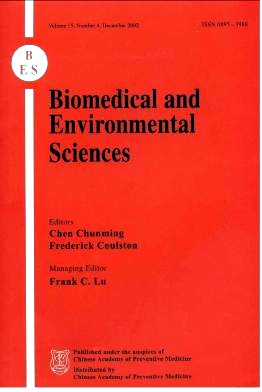Lead Can Inhibit NMDA-, K+-, QA/KA-Induced Increases in Intracellular Free Ca2+ in Cultured Rat Hippocampal Neurons
-
Key words:
- Lead poisoning /
- Glutamate receptor /
- Rat hippocampal neuron /
- Calcium /
- Learning deficit /
- Laser scanning confocal microscopy
Abstract: Objective To examine the effects of Pb2+ on N-methyl-D-aspartate (NMDA)-, K+- and quisqualate(QA)/kainite(KA)-induced increases in intracellular free calcium concentration ([Ca2+]i) in cultured fetal rat hippocampal neurons in order to explain the cognitive and learning deficits produced by this heavy metal. Methods Laser scanning confocal microscopy was used. Results The results clearly demonstrated that adding Pb2+ before or after NMDA/glycine stimulation selectively inhibited the stimulated increases in [Ca2+]i in a concentration-dependent manner. In contrast, Pb2+ treatment did not markedly affect increases in [Ca2+]i induced by an admixture of QA and KA. The minimal inhibitory effect of Pb2+ occurred at 1 μ mol/L, and more than seventy percent abolition of the NMDA-stimulated increase in [Ca2+]iwas observed at 100 μmol/L Pb2+. Evaluation of pb2+-induced increase in [Ca2+]i response to elevating extracellular concentrations of NMDA, glycine or calcium revealed that Pb2+ was a noncompetitive antagonist of both NMDA and glycine, and a competitive antagonist of Ca2+ at NMDA receptor channels. In addition, Pb2+ inhibited depolarization-evoked increases in [Ca2+]i mediated by K+ stimulation (30 μmol/L), indicating that Pb2+ also depressed the voltage-dependent calcium channels. Also, the results showed that Pb2+ appeared to be able to elevate the resting levels of [Ca2+]i in cultured neurons, implying a reason for pb2+-enhanced spontaneous release of several neurotransmitters reported in several previous studies. Conclusion Lead can inhibit NMDA-, K+-, QA/KA-inducod increases in intracellular [Ca2+]i in cultured hippocampal neurons.
| Citation: | ZHANG Heng-shan, SONG Li-hua, WANG LI, QIN Yu-hui. Lead Can Inhibit NMDA-, K+-, QA/KA-Induced Increases in Intracellular Free Ca2+ in Cultured Rat Hippocampal Neurons[J]. Biomedical and Environmental Sciences, 2002, 15(4): 330-340. |







 Quick Links
Quick Links
 DownLoad:
DownLoad: